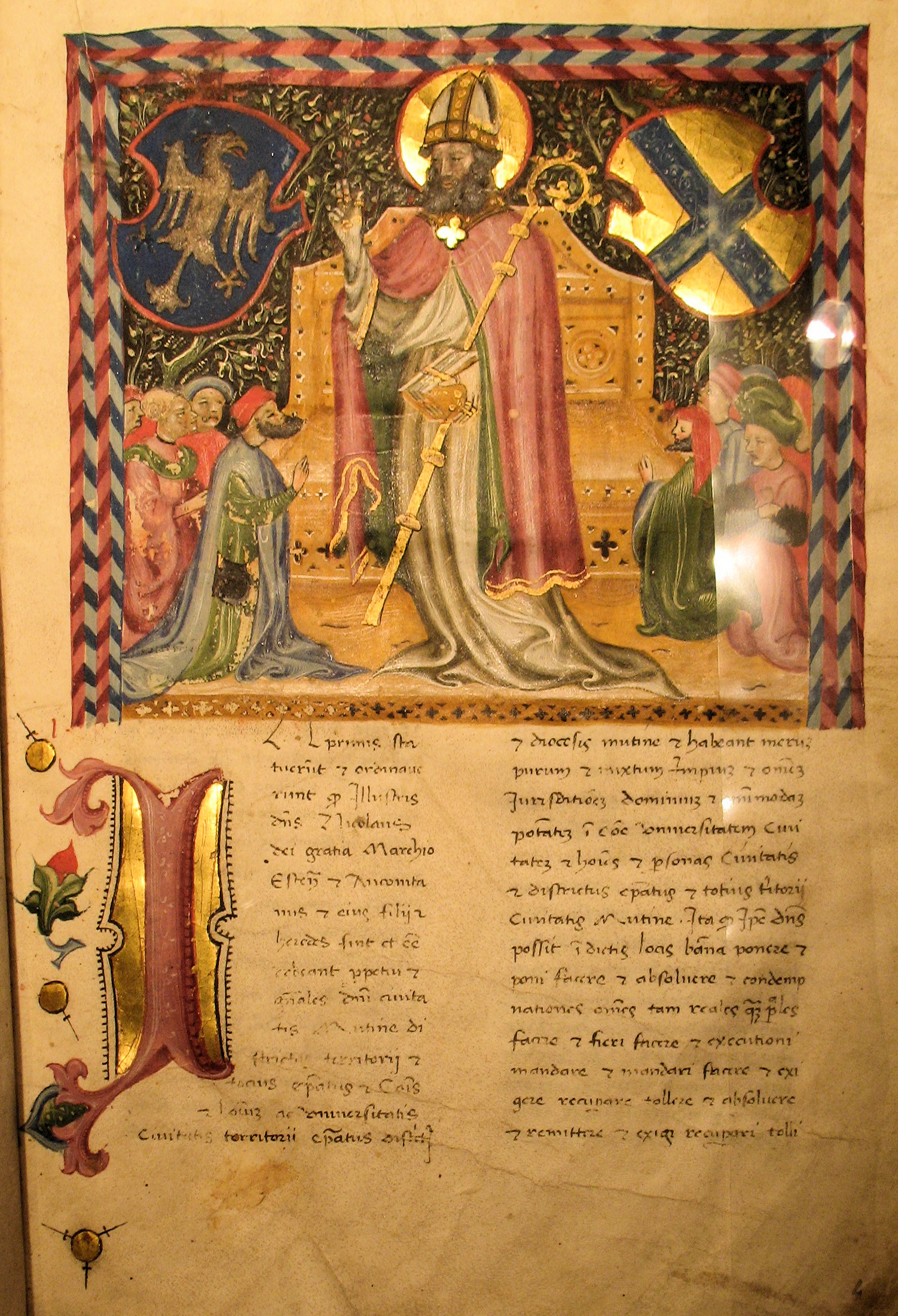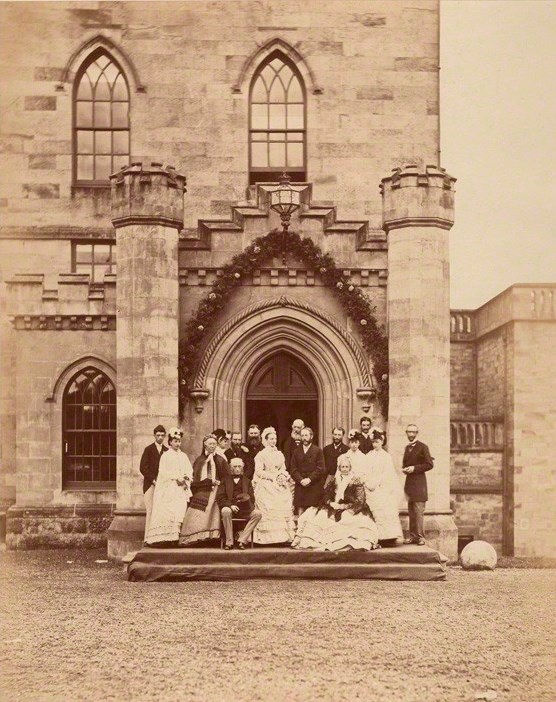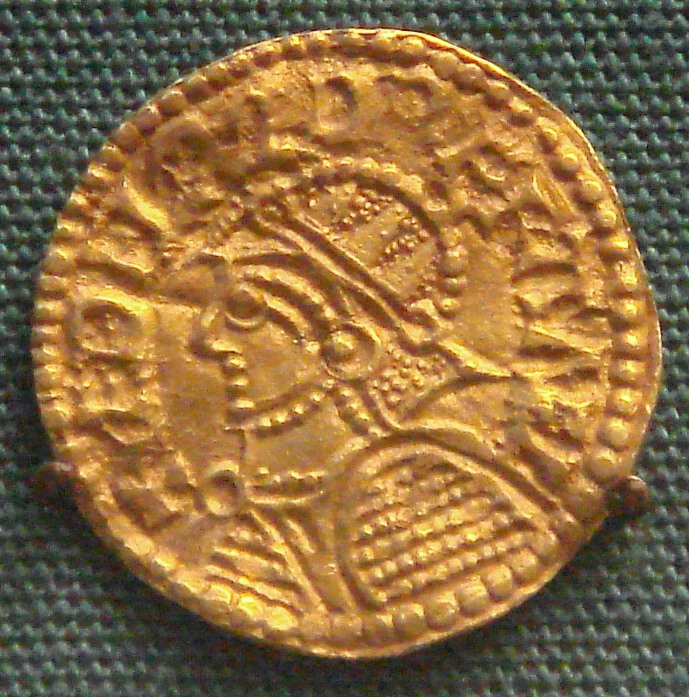|
Meldred
Meldred is a character who appears in literary accounts of post-Roman Britain. He is identified as a chieftain in part of what is now southern Scotland for a period in the 6th Century. A twelfth century text references a petty king named ''Meldredus'' who had ruled in Tweeddale. MacQueen, W. and MacQueen, J. (eds.), (1989), ''Vita Merlini Sylvestris'', in ''Scottish Studies'' 29, pp. 77 - 93, at 81 The village of Drumelzier in Peeblesshire may take its name from him and his seat of power may have been the fort of Tinnis Castle. He is of interest as a character in the source texts on which the Arthurian romances are based and potentially the first named political leader associated with the Scottish Borders in the post-Roman period. Death of Lailoken In ''Vita Merlini Silvestris'', a twelfth-century source text for the literary character Merlin, Meldred features as the captor of Lailoken, a warrior so traumatised by the scale of the slaughter he witnesses at the Battle of Arfde ... [...More Info...] [...Related Items...] OR: [Wikipedia] [Google] [Baidu] |
Drumelzier
Drumelzier (), is a village and civil parish on the B712 in the Tweed Valley in the Scottish Borders. The area of the village is extensive and includes the settlements of Wrae, Stanhope, Mossfennan and Kingledoors. To the north is Broughton and to the south the road passes Crook Inn to Tweedsmuir. Powsail Burn (also called Drumelzier Burn) runs through Drumelzier to become a tributary of the River Tweed. Stobo Castle hotel and health spa are in the area, as is Dawyck Botanic Garden, one of three "Regional Gardens" of the Royal Botanic Garden Edinburgh. History Toponymy The name is recorded as Dunmedler (circa 1200); Dumelliare (1305); Drummeiller (1326); Drummelzare (1492) and Drummelzier (1790). The name may derive from the Gaelic for 'bare hill'. Alternatively, it has been suggested that the village may be named after Meldred, a sixth-century petty king or chieftain who features in literary accounts of post-Roman Britain and may have had his power base at Tinnis C ... [...More Info...] [...Related Items...] OR: [Wikipedia] [Google] [Baidu] |
Gospatric, Earl Of Northumbria
Gospatric or Cospatric (from the Cumbric "Servant of aint Patrick"), (died after 1073), was Earl of Northumbria, or of Bernicia, and later lord of sizable estates around Dunbar. His male-line descendants held the Earldom of Dunbar, later known as the Earldom of March, in south-east Scotland until 1435, and the Lordship and Earldom of Home from 1473 until the present day. Background Symeon of Durham describes Gospatric, Earl of Northumbria, as maternal grandson, through his mother Ealdgyth, of Northumbrian ealdorman Uchtred the Bold and his third wife, Ælfgifu, daughter of King Æthelred II. This follows the ancestry given in the earlier '' De obsessione Dunelmi'', in which Gospatric's father is named as Maldred, son of ''Crinan, tein'' (thegn Crínán), perhaps the Crínán of Dunkeld who was father of Scottish king Duncan I. Even were thegn Crínán the same as Crínán of Dunkeld, it is not certain Maldred was born to Duncan's mother, Bethóc, daughter of the Scot ... [...More Info...] [...Related Items...] OR: [Wikipedia] [Google] [Baidu] |
Post-Roman Britain
Sub-Roman Britain, also called post-Roman Britain or Dark Age Britain, is the period of late antiquity in Great Britain between the end of Roman rule and the founding of Anglo-Saxon kingdoms. The term was originally used to describe archaeological remains found in 5th- and 6th-century AD sites that hinted at the decay of locally made wares from a previous higher standard under the Roman Empire. It is now used to describe the period that began with the recall of Roman troops from Britannia to Gaul by Constantine III in 407 and ended with the Battle of Deorham in 577. This period has attracted a great deal of academic and popular debate, in part because of the lack of written records from the time. Meaning of terms The period of sub-Roman Britain traditionally covers the history of the parts of Britain that had been under Roman rule from the end of Roman imperial rule, traditionally dated to be in 410, to the arrival of Saint Augustine in 597. The date taken for the end o ... [...More Info...] [...Related Items...] OR: [Wikipedia] [Google] [Baidu] |
Crínán Of Dunkeld
Crínán of Dunkeld, also called Crinan the Thane (c. 975–1045), was the erenagh, or hereditary lay-abbot, of Dunkeld Abbey and, similarly to Irish "royal- and warrior-abbots" of the same period like the infamous case of Fedelmid mac Crimthainn, led armies into battle and was very likely also the Mormaer of Atholl during the events later fictionalized in William Shakespeare's verse drama '' The Tragedy of Macbeth''. Although he does not appear in Shakespeare's play, he was the legitimately married son-in-law of King Malcolm II of Scotland, the father of King Duncan I of Scotland, and the grandfather of King Malcolm III of Scotland. Through his far more famous grandson, for whose claim to the throne of Scotland the abbot laid down his life in battle against his nephew, the Scottish High King Macbeth, Abbot Crínán is the ancestor of every subsequent monarch of the House of Dunkeld. His descendants would reign over the Kingdom of Scotland until the accidental death of King Ale ... [...More Info...] [...Related Items...] OR: [Wikipedia] [Google] [Baidu] |
Arthurian Characters
The Arthurian legend features many characters, including the Knights of the Round Table The Knights of the Round Table (, , ) are the legendary knights of the fellowship of King Arthur that first appeared in the Matter of Britain literature in the mid-12th century. The Knights are a chivalric order dedicated to ensuring the peace ... and members of King Arthur's family. Their names often differ from version to version and from language to language. The following is a list of characters with descriptions. : Indicates a Knight of the Round Table. See also * List of characters named Ywain in Arthurian legend References {{Arthurian Legend Arthurian, Arthurian characters ... [...More Info...] [...Related Items...] OR: [Wikipedia] [Google] [Baidu] |
Medieval Literature
Medieval literature is a broad subject, encompassing essentially all written works available in Europe and beyond during the Middle Ages (that is, the one thousand years from the fall of the Western Roman Empire ca. AD 500 to the beginning of the Renaissance in the 14th, 15th or 16th century, depending on country). The literature of this time was composed of religious writings as well as secular works. Like modern literature, it is a broad field of study, from the utterly sacred to the exuberantly profane, touching all points in between. Works of literature are often grouped by place of origin, language, and genre. Languages Outside of Europe, medieval literature was written in Geʽez, Ethiopic, Syriac language, Syriac, Coptic language, Coptic, Japanese language, Japanese, Chinese language, Chinese, and Arabic, among many other languages. In Western Europe, Latin was the common language for medieval writing, since Latin was the language of the Roman Catholic Church, which domin ... [...More Info...] [...Related Items...] OR: [Wikipedia] [Google] [Baidu] |
Birlinn (publisher)
Birlinn Limited is an independent publishing house based in Edinburgh, Scotland. It was established in 1992 by managing director Hugh Andrew. Imprints Birlinn Limited is composed of a number of imprints, including: *Birlinn, which publishes Scottish interest books, from biography to history, military history and Scottish Gaelic. (Its name comes from the old Norse word , meaning a long boat or small galley with 12 to 18 oars, used especially in the Hebrides and West Highlands of Scotland in the Middle Ages.) *Polygon Books, which publishes literary fiction and poetry, both classic and modern, from Scottish writers such as Robin Jenkins, George Mackay Brown, and the author of '' The No. 1 Ladies' Detective Agency'', Alexander McCall Smith. It was founded in the late 1960s by students of the University of Edinburgh. *Mercat Press Mercat Press is an imprint of the Edinburgh, Scotland-based publishing company Birlinn Limited. It was established in 1970 as a subsidiary of th ... [...More Info...] [...Related Items...] OR: [Wikipedia] [Google] [Baidu] |
Earls Of Dunbar
The title Earl of Dunbar, also called Earl of Lothian or Earl of March, applied to the head of a Count, comital lordship in south-eastern Scotland between the early 12th century and the early 15th century. The first man to use the title of Earl in this capacity was Gospatric II, Earl of Lothian, son of Gospatric, Earl of Northumbria. It descended to George de Dunbar, 11th Earl of March, whose titles & estates were declared forfeit by the Scottish parliament in 1435, and retired into obscurity in England. His son Patrick retained a barony at Kilconquhar in Fife. The title of Earl of Dunbar was revived in 1605 for George Home, 1st Earl of Dunbar, George Home, 1st Lord Hume of Berwick, Chancellor of the Exchequer, and ''his heirs male''. This title became dormant only six years after its creation, upon Home's death in 1611. Some of his kinsmen were said to be acknowledged as ''de jure'' holders of the title, but none of them ever appears to have assumed the title. There have been n ... [...More Info...] [...Related Items...] OR: [Wikipedia] [Google] [Baidu] |
Earl Of Home
Earl of Home ( ) is a title in the Peerage of Scotland. It was created in 1605 for Alexander Home of that Ilk, 6th Lord Home. The Earl of Home holds, among others, the subsidiary titles of Lord Home (created 1473) and Lord Dunglass (1605) in the Peerage of Scotland, and Baron Douglas, of Douglas in the County of Lanark (1875), in the Peerage of the United Kingdom. Various Earls of Home have also claimed the title of Lord Hume of Berwick. The Earl is also '' Chief of the Name and Arms of Home'' and '' heir general'' to the House of Douglas. The title of Lord Dunglass is used as a courtesy title by the eldest son of the Earl. The most famous recent holder of the title was the 14th Earl, Alexander Frederick Douglas-Home, better known as Sir Alec Douglas-Home. After the unexpected resignation of Harold Macmillan, the 14th Earl was named Prime Minister by the monarch. For the first time in over sixty years, a sitting Prime Minister was a member of the House of Lords rather than ... [...More Info...] [...Related Items...] OR: [Wikipedia] [Google] [Baidu] |
Æthelred The Unready
Æthelred II (,Different spellings of this king's name most commonly found in modern texts are "Ethelred" and "Æthelred" (or "Aethelred"), the latter being closer to the original Old English form . Compare the modern dialect word . ; ; 966 – 23 April 1016), known as Æthelred the Unready, was List of English monarchs, King of the English from 978 to 1013 and again from 1014 until his death in 1016. His epithet comes from the Old English word meaning "poorly advised"; it is a pun on his name, which means "well advised". Æthelred was the son of Edgar, King of England, King Edgar and Ælfthryth (wife of Edgar), Queen Ælfthryth. He came to the throne at about the age of 12, following the assassination of his elder half-brother, King Edward the Martyr. The chief characteristic of Æthelred's reign was conflict with the Danes (tribe), Danes. After several decades of relative peace, Danish raids on English territory began again in earnest in the 980s, becoming markedly more se ... [...More Info...] [...Related Items...] OR: [Wikipedia] [Google] [Baidu] |
Uhtred The Bold
Uhtred of Bamburgh (Uhtred the Bold—sometimes Uchtred; died ca. 1016), was ruler of Bamburgh and from 1006 to 1016 the ealdorman of Northumbria. He was the son of Waltheof I, ruler of Bamburgh (Bebbanburg), whose family, the Eadwulfingas, had ruled the surrounding region for over a century. Uhtred's death by assassination was described in '' De obsessione Dunelmi'' and has been interpreted as the beginning of a blood feud. Lest he be confused with Uhtred, the son of Eadwulf I of Bamburgh, he historically has been referred to as Uhtred the Bold. Accomplishments In 995, according to Symeon of Durham, when the remains of St Cuthbert were transferred from Chester-le-Street to Durham, Uhtred went to Durham with his monks to clear the site of the new cathedral. The new cathedral was founded by Bishop Aldhun, and Uhtred married Aldhun's daughter, Ecgfrida, probably at about this time. From his marriage he received several estates that had belonged to the church. In 1006 Ki ... [...More Info...] [...Related Items...] OR: [Wikipedia] [Google] [Baidu] |
Duncan I Of Scotland
Donnchad mac Crinain (; anglicised as Duncan I, and nicknamed An t-Ilgarach, "the Diseased" or "the Sick"; – 14 August 1040)Broun, "Duncan I (d. 1040)". was king of Scotland (''Alba'') from 1034 to 1040. He is the historical basis of the " King Duncan" in Shakespeare's play ''Macbeth''. Life The ancestry of King Duncan is not certain. In modern texts, he is the son of Crínán, hereditary lay abbot of Dunkeld, and Bethóc, daughter of King Malcolm II. However, in the late 17th century the historian Frederic Van Bossen, after collecting historical accounts throughout Europe, identified King Duncan as the first son of Abonarhl ap crinan (the grandson of Crinan) and princess Beatrice, the eldest daughter to King Malcom II, and Gunnor who was the daughter of the " 2nd Duke of Normandy". Unlike the "King Duncan" of Shakespeare's ''Macbeth'', the historical Duncan appears to have been a young man. He followed his grandfather Malcolm as king after the latter's death on 25 N ... [...More Info...] [...Related Items...] OR: [Wikipedia] [Google] [Baidu] |




